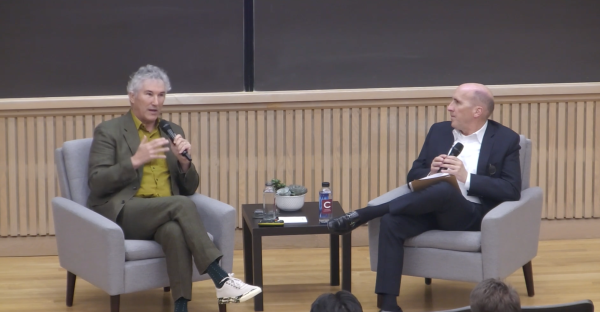La Casa To Maintain Status as Interest Housing for 2013-2014 Academic Year
This year, Colgate’s Residential Life (ResLife) department has begun to restructure interest housing for upperclassmen. While the department’s original plan included repurposing several former “interest houses” – including John C. Cushman III House (102 Broad Street), the Creative Arts House (100 Broad Street) and the Latino/Latina interest house known as La Casa – a group of passionate students have managed to fight to keep La Casa alive, and plan to spend next year resuscitating its programming and initiatives.
Charity Whyte, one of the three students who spearheaded the student-led initiative to reverse ResLife’s decision, is clearly passionate about the importance of the continued presence of a Latino/Latina interest house at Colgate.
“I think that given the campus that Colgate is, for right now it is appropriate to have houses like Asia House and La Casa,” Whyte said. “But I also feel like those houses, and the group of people that are doing the programming for those houses, should have a priority to include the entire student body instead of using the house for exclusive purposes.”
Brenda Ice, the director of Residential Life, noted that for now, the details surrounding interest housing at Colgate are still in flux.
“The role of interest communities is one of connectedness and shared experiences,” Ice said. “As Colgate begins to reexamine our approach to the out-of-the-classroom experience [for example Living the Liberal Arts], it is likely there will be [more] discussion about the role of interest communities in the residential experience moving forward.”
Though Whyte is only a first-year and will not be eligible to live in interest housing until her junior year, she was passionate enough about its persistence to devote hours to petitioning, meeting with ResLife, meeting with SGA representatives and developing a strong interest housing proposal for a group that desired to carry on the La Casa tradition.
Whyte did all this legwork alongside equally dedicated sophomore Tatiana Sanabria and junior Wendy Hernandez, both of whom will be living in La Casa in the upcoming year.
“Basically every Community Leader has floor meetings, and in one of our meetings my Community Leader briefly went over [the recent interest housing application policy] change,” Whyte said. “When she said that La Casa, Creative Arts House and a few others were no longer going to be interest housing, I was alarmed because I didn’t understand how houses like that could just go away. I figured they would be a traditional part of Colgate that mattered a lot to alumni and the student body of Colgate as a whole.”
In addition to this repurposing, under the current system only two interest-based communities are locked to a particular physical space – a distinct departure from the previous policy.
“Groups applying for interest-based housing will determine the theme of the residence for the upcoming academic year in their applications, with the exception of Whitnall Hall (wellness living) and Crawshaw Hall (Harlem Renaissance Center),” according to the Colgate website.
By the time Whyte, Sanabria and Hernandez realized the proposed change of La Casa’s function, they only had about a week and a half to advocate their case and work through the proposal process. Under the new interest housing guidelines, students apply for houses as a group, selecting and defending their own themes; these students are then assigned to one of the spaces dedicated to interest housing, a list which now includes the Loj, Asia House, Bunche House and others. The three La Casa advocates were applying for an interest house, just like any other group, but they were also fighting for the maintenance of the physical space of La Casa as a symbol for the
Latino community.
“We don’t just want a house; that’s not the point. La Casa has been a physical presence for Latino/Latina students and their allies for more than 10 years,” Whyte said. Whyte, Sanabria and Hernandez are interested in seeing the tradition perpetuated, and they are not alone.
“It’s really important to have houses like this on a campus,” senior Jen Uribe said. “It’s not necessarily about their concrete value, because there are not enough people from each ethnic group to necessarily have events all the time, but it’s more about the symbolic value, to know that they are represented on this campus. [La Casa] is a space where I’m comfortable going, where you can go knowing that it’s yours.”
Despite their conviction, these proponents of maintaining La Casa as a Latin American cultural and interest house did not position themselves in opposition to the Res Life staff.
“We really care about having a good relationship with Res Life,” Whyte said. “We really appreciate Brenda Ice and all that she has contributed to this process, all of the questions she answered, and for being patient with us – especially since this was our first time applying for interest housing here.”
In the end, this healthy relationship paid off this past week when these students were granted La Casa – both the interest community and the physical space – at least for the upcoming academic year.
Contact Rebekah Ward at
rward@colgate.edu.




